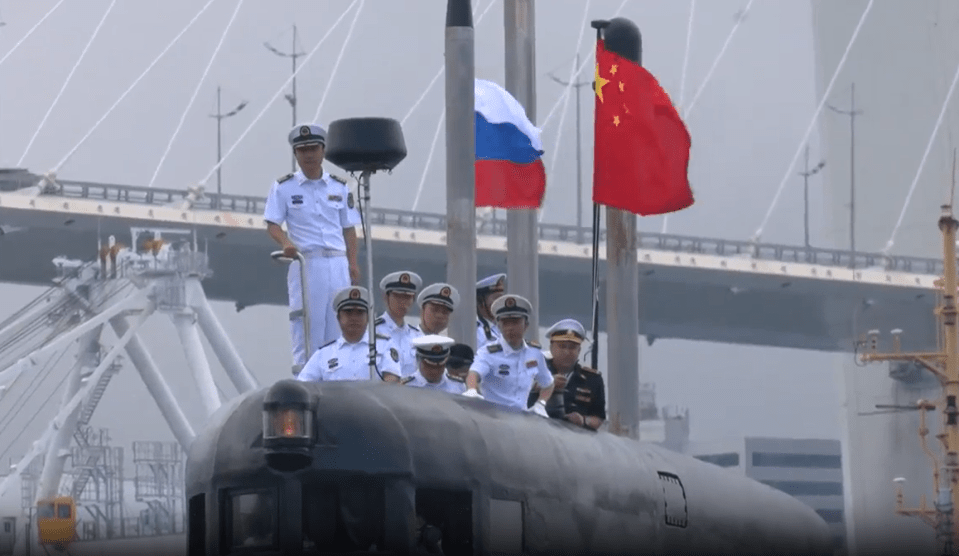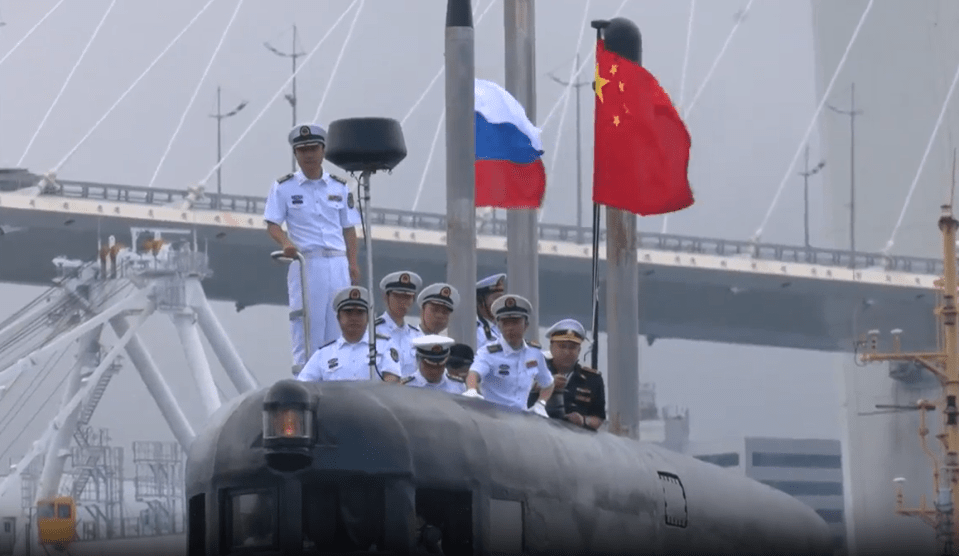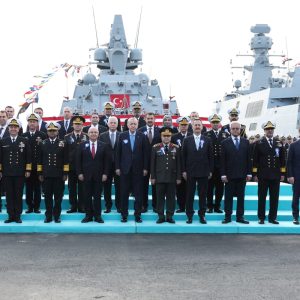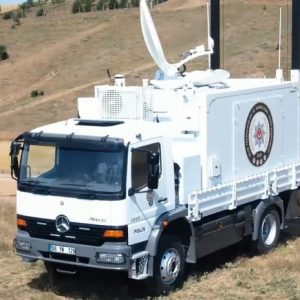Russia and China have launched the Joint Sea‑2025 naval drills in the Sea of Japan near Vladivostok. These exercises begin just days after U.S. President Trump ordered nuclear submarines closer to Russia in response to statements by Dmitry Medvedev.

Strategic Objectives of Joint Sea‑2025 Naval Drills
The Joint Sea‑2025 naval drills reflect deepening military synchronization under the “no‑limits” strategic partnership between Moscow and Beijing. According to official sources, they will include anti‑submarine warfare, air‑defense, missile interception, maritime combat, and submarine rescue operations.
Participants include four Chinese warships—among them the guided‑missile destroyers Shaoxing and Urumqi—alongside a large Russian anti‑submarine vessel, diesel‑electric submarines from both nations, and a Chinese submarine rescue ship.
Context and Timing: U.S. Submarine Move and Escalating Tensions
On August 1, U.S. President Donald Trump announced he had ordered two nuclear submarines to be positioned in “appropriate regions” near Russia in response to Medvedev’s warnings of potential nuclear conflict.
Medvedev’s remarks, referencing Russia’s Cold‑War “Dead Hand” automated strike system, sparked concern. Trump described them as “highly provocative” and acted to signal deterrence.
Kremlin Response
Moscow downplayed the U.S. submarine deployment, calling it routine and advising caution in nuclear rhetoric. Kremlin spokesman Dmitry Peskov emphasized policy consistency under President Putin.
Military Significance and Regional Impact
These drills form part of Russia’s broader “July Storm” naval exercises earlier in July, which involved over 150 vessels, 120 aircraft, and advanced systems across multiple theaters, including the Pacific and Arctic.
The location near Vladivostok signals Moscow and Beijing’s intent to project power in the Asia-Pacific and deter NATO-aligned forces. Japan has raised security concerns about rising China‑Russia naval coordination.
Technical Overview of Key Exercise Elements
Joint anti‑submarine training will exercise coordination between diesel and rescue vessels in simulated threats under realistic conditions. Air‑defense and missile trials will include layered interception tactics typical of modern naval warfare.
These drills combine live‑fire training, coordination drills, and rescue operations—demonstrating full maritime engagement capabilities.
Such operations test interoperability across command, weapons systems, and support logistics—an essential demonstration for high‑sensitivity defense planners.
Conclusion: Message to Global Players
The Joint Sea‑2025 naval drills underscore the operational depth of China‑Russia military alignment and serve as a strategic signal amid renewed U.S. nuclear deterrence posturing. The overlapping timing with Trump’s decision reflects heightened geopolitical tension without direct coordination.
For defense and aerospace analysts, the drills illustrate how naval power is being calibrated in contested maritime zones and underscore the importance of strong anti-submarine and air defense readiness for U.S. allies in the region.
Further monitoring is recommended regarding post-exercise patrol patterns and any follow‑on diplomatic or defense declarations.











